#Best trekking in Nepal
Explore tagged Tumblr posts
Text
#himalayantrekkingpath trekkinginnepl#hiking#annapurna circuit trek#annapurna circuit trek cost#himalayan trekking path#best local trekking company in nepal#act trek nepal#trekking in nepal#trekking#photography#hiking and trekking in nepal#best trekking in nepal
0 notes
Text
Trekking in Nepal
Trekking in Nepal is an adventure unlike any other amidst entrancing nature and its rich culture, one can visit from remote ethnic Himalayan settlements, beautiful villages, and gorgeous Himalayan landscapes to breathtaking river valleys with unique terrains. Walk on coruscating trails that pass through beautiful alpine forests and open pastureland.
Trekking in Nepal truly is like tasting a piece of paradise. What exactly it is about Nepal that offers the most unique experiences in the entire world, one might ask. It is perhaps that you can find eight of the top ten highest summits in the world here, or you can immerse yourself in some of the most beautiful landscapes which are only reachable on foot, or the beautiful glacial lakes, or the food. Go trekking and find out for yourself and when you return you will not be the same person again.
#trekking in Nepal#Best Trekking in Nepal#Trekking in Nepal 2024#Nepal trekking packages#Nepal Trekking
0 notes
Text
Most Famous Trekking In Nepal
Nepal is the home of the world's highest spectacular treks. Nepal has the most beautiful and largest Himalayas and mountain ranges in the world. Travelers from all over the world enjoy these interesting and exciting treks. If you are thinking of traveling to Nepal then trekking is a must thing to do. Here is the list of the most famous classic treks to advanced treks in Nepal.
1. Everest Base Camp Trek
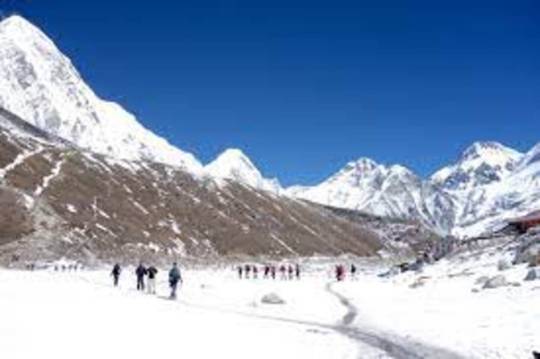
The Everest Base Camp Trek is the most desired trek in the world and a popular trek for mountain lovers. This trek allows you to admire the mesmerizing views of the highest mountain in the world, Mount Everest. The best time to travel can be from March to May and September to November. This trip gives you the opportunity to see the way of life of the mountain people, their culture and the village lifestyle. You can walk through the beautiful forests of the mountains and large glaciers that flow with water in the river. You can be a part of Tibetan and Buddhist culture throughout the trip. The road is full of interesting monasteries and many rocks. The trek may be difficult, but it will be the memory of a lifetime.
2. Annapurna Base Camp Trek
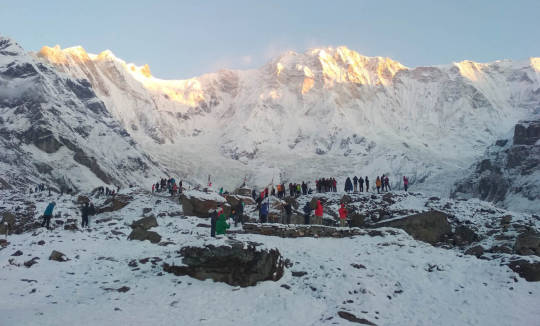
Annapurna Base Camp Trek is another famous trek in Nepal. This trip will take you to an altitude of 4210 meters. The best time for the trip can be from March to May and September to December. This trip can be the best option for all those who cannot make it to Everest Base Camp. Annapurna trek can be an amazing experience because it gives the trekkers a chance to see the panoramic view of the famous mountains like Annapurna, Dhaulagiri, and Macchapuchre, rain forest covered in the shade of rhododendrons and - red and roses. The trek passes through small villages in the mountains, giving a glimpse of rural life. You can witness the settlement under the mountain as well as monasteries and temples. The people who live here are a unique blend of Buddhism and Hindu culture. They are very helpful and very hospitable. Annapurna Base Camp is one of the most popular treks in Nepal because of the cultural and natural beauty it has to offer.
3. Langtang Valley Trek
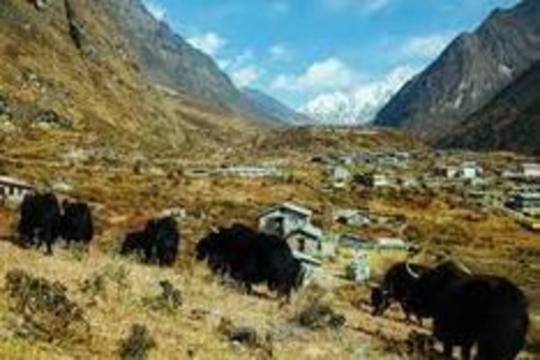
Langtang Valley Trek is another popular trek in Nepal. As you enter the wilderness of the valley, you will see beautiful soaring mountains, crystal clear rivers, and quiet countryside. Along with this, you can admire the many habitats that are surrounded by Langtang National Park. It is a paradise of Himalayan habitats. You can see hundreds of species of birds like the national bird of Nepal, danphe, Himalayan wildebeest, and pheasant. It is home to many animals, including many endangered species such as musk deer, snow leopard, red panda, and Himalayan Thar. Another interesting thing is the culture of the people living in the valley. Most of the people are Tamang, Sherpa, and Gurung in the villages that have retained the ancient culture in their way of life. The best time to visit can be from March to May or from September to December. You can reach a height of about 5,050 meters and the journey can be difficult. The route starts from Syarbubesi and you can see the beautiful Himalayan peaks like Langtang Lirung, Gyanghempo, and the unique Dorjee Lhkpa pyramid. The breathtaking views of mountains, forests, and Himalayan habitats complemented by warm people will give you a memory you will cherish for the rest of your life.
4. Mardi Himal Trek
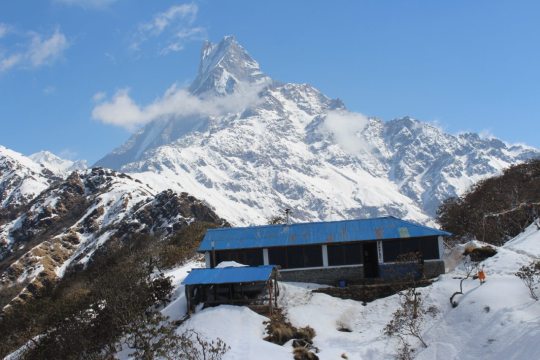
Mardi Himal Trek is also another beautiful and short trek in Nepal. This trek allows you to reach an altitude of about 4500m. The best time for travel is from March to May and September to December. This trail is less well-known than the Everest Base Camp Trail or the Annapurna Base Camp Trail, but it gives you a great view of the Annapurna Range. This trip will allow you to stay close to beautiful mountains like Macchapuchre, Huinchuli, Annapurna, and Mardi itself. You will be an incomparable observer of the natural beauty of the forest. The trip is famous for its rhododendron flowers and their amazing variety. The trail continues to offer great views of Macchapuchre and the forest. Tuesday's trek is a treat for your eyes and soul as you will witness stunning natural beauty and unique culture.
5. Manaslu Circuit Trek
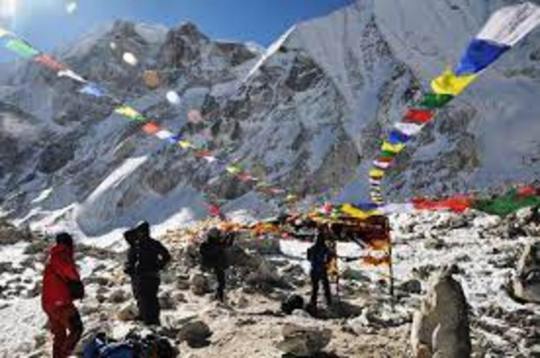
Manaslu Circuit Trek is another wonderful trek in Nepal. It is one of the hidden gems of the country and allows you to see the full treasure that is the eighth-highest mountain in the world. You will have a panoramic view of Manaslu and various amazing things. The route passes through the peaks of Himlung Himal, Cheo Himal, Kang Guru, and Annapurna II. It also passes through villages inhabited by large ethnic groups such as Gurung, Nubri, and Tsum. You can have a glimpse of their traditional life which involves agriculture and animal husbandry. This trip can be a complete sightseeing and peaceful experience. It allows you to reach an altitude of around 5,000 meters. The best time to visit can be from March to May or from September to November. Apart from the fascinating mountains and warm culture, you can also see a large habitat of animals including snow leopards and hundreds of birds.
In Conclusion
If you are thinking of visiting Nepal then do make a plan to trek this beautiful mountain which will not disappoint you and make your travel vacation memorable.
0 notes
Text
#trekking#nepal#winter#snow#winter treks in nepal#10 Best Winter Treks In Nepal#vertex holiday#holiday#vacation#travel#destinations#nature#hiking#mountains#landscape#trees#nature photography#lake#himalayas
2 notes
·
View notes
Text
Planning Your Langtang Valley Trek - 11 Days: Tips and Advice
The Langtang Valley Trek is one of Nepal's most accessible and beautiful trekking routes, offering a blend of stunning natural landscapes, cultural insights, and a sense of adventure. Situated north of Kathmandu, close to the Tibetan border, the Langtang Valley is often described as the "Valley of Glaciers." Here is a comprehensive guide to planning your 11-day trek to ensure a memorable and smooth experience.
Day 1: Arrival in Kathmandu
Preparation:
Flights and Visas: Ensure your flights to Tribhuvan International Airport are booked well in advance. A tourist visa for Nepal can be obtained on arrival or online.
Accommodation: Book a hotel in Kathmandu for your first and last nights. Thamel is a popular area for trekkers, with numerous lodges and guesthouses.
Permits: Obtain your Langtang National Park permit and TIMS (Trekkers’ Information Management System) card from the Nepal Tourism Board office in Kathmandu.
Activities:
Rest and acclimatize after your journey.
Explore Kathmandu’s heritage sites, such as Swayambhunath (Monkey Temple) and Durbar Square.
Day 2: Drive from Kathmandu to Syabrubesi| Duration: 7-8 hours
Route:
Start early to avoid traffic. The drive takes you through scenic landscapes and terraced fields.
Roads can be bumpy and challenging, especially during the monsoon season.
Tips:
Consider hiring a private jeep for comfort, though public buses are a more budget-friendly option.
Pack snacks and water, as stops along the way can be limited in options.
Day 3: Trek from Syabrubesi to Lama Hotel| Duration: 6-7 hours| Elevation: 1,503m to 2,470m
Route:
Begin your trek along the Langtang Khola (river). The trail passes through dense forests of oak, rhododendron, and bamboo.
Keep an eye out for local wildlife, including red pandas and langur monkeys.
Tips:
Start early to avoid the afternoon heat.
Wear sturdy trekking boots and carry trekking poles for stability.
Day 4: Lama Hotel to Langtang Village| Duration: 6-7 hours| Elevation: 2,470m to 3,430m
Route:
Continue along the river through forests and across several suspension bridges.
The trail opens up, revealing breathtaking views of the Langtang Lirung peak (7,227m).
Tips:
Take breaks to acclimatize and enjoy the scenery.
Stay hydrated and watch for signs of altitude sickness.
Day 5: Langtang Village to Kyanjin Gompa| Duration: 4-5 hours| Elevation: 3,430m to 3,870m
Route:
The trail gradually ascends, with spectacular views of snow-capped mountains.
Visit the ancient Kyanjin Gompa monastery and the local cheese factory.
Tips:
Spend the afternoon exploring the village and surrounding areas.
Taste the locally made yak cheese.
Day 6: Acclimatization Day in Kyanjin Gompa
Activities:
Kyanjin Ri Hike: Climb to Kyanjin Ri (4,773m) for panoramic views of the Langtang range.
Tserko Ri: For a more challenging hike, ascend Tserko Ri (5,000m) early in the morning.
Tips:
Take it slow to adjust to the altitude.
Enjoy the local culture and interact with the villagers.
Day 7: Kyanjin Gompa to Lama Hotel| Duration: 6-7 hours
Route:
Retrace your steps back to Lama Hotel.
Descending is generally easier, but be mindful of your knees.
Tips:
Use trekking poles to reduce impact on your joints.
Stay vigilant for wildlife and changing weather conditions.
Day 8: Lama Hotel to Syabrubesi|Duration: 5-6 hours
Route:
Continue descending through the lush forests.
Reflect on your journey and take in the final views of the Langtang Valley.
Tips:
Enjoy a leisurely pace and take plenty of photos.
Celebrate your trek with fellow trekkers upon arrival.
Day 9: Drive from Syabrubesi to Kathmandu| Duration: 7-8 hours
Route:
Return to Kathmandu by jeep or bus.
The journey offers another chance to enjoy Nepal’s diverse landscapes.
Tips:
Prepare for a long, bumpy ride and bring entertainment or a good book.
Arrange your accommodation in Kathmandu in advance.
Day 10: Rest and Explore Kathmandu
Activities:
Sightseeing: Visit Pashupatinath Temple, Boudhanath Stupa, and Patan Durbar Square.
Shopping: Thamel offers a variety of souvenirs, trekking gear, and handicrafts.
Cultural Experience: Enjoy traditional Nepali cuisine and cultural shows.
Tips:
Hire a local guide for a more enriching experience.
Keep your valuables secure and be cautious of crowded areas.
Day 11: Departure
Preparation:
Confirm your flight details and arrange transport to the airport.
Reflect on your trek and plan your next adventure!
Tips:
Ensure all your documents and souvenirs are packed safely.
Leave early for the airport to avoid any last-minute rush.
Additional Tips and Advice for the Langtang Valley Trek
Health and Safety
Vaccinations: Ensure you are up-to-date with necessary vaccinations. Consult with your healthcare provider.
Altitude Sickness: Acclimatize properly, stay hydrated, and know the symptoms of Acute Mountain Sickness (AMS). Consider carrying Diamox as a precaution.
Travel Insurance: Obtain comprehensive travel insurance that covers high-altitude trekking and emergency evacuation.
Packing List
Clothing: Layered clothing, including thermal wear, waterproof jacket, down jacket, trekking pants, gloves, and a warm hat.
Footwear: Sturdy, broken-in trekking boots and multiple pairs of socks.
Gear: Sleeping bag (rated for cold temperatures), trekking poles, a headlamp, and a daypack.
Personal Items: First aid kit, water purification tablets, toiletries, sunscreen, and a hat for sun protection.
Food and Accommodation
Tea Houses: Accommodation along the Langtang Valley Trek is primarily in tea houses, which offer basic lodging and meals.
Meals: Expect a variety of dishes, including dal bhat (rice and lentils), noodles, soups, and momo (dumplings). Carry snacks for energy during trekking.
Water: Always drink purified or boiled water. Carry a reusable water bottle and purification tablets or a filter.
Cultural Etiquette
Respect Local Customs: Dress modestly, ask for permission before taking photos, and respect local traditions.
Language: Learning a few basic Nepali phrases can enhance your interaction with locals.
Environmental Responsibility: Follow the principles of Leave No Trace. Dispose of waste properly and minimize your environmental impact.
Guides and Porters
Hiring a Guide: A local guide can enhance your trekking experience with insights into the region's culture, history, and natural environment. They also ensure your safety and navigation.
Porters: Consider hiring a porter to carry your heavy gear, allowing you to enjoy the trek more comfortably and supporting the local economy.
Final Thoughts
The Langtang Valley Trek is a journey through some of Nepal’s most stunning landscapes, rich in culture and natural beauty. By planning carefully and following these tips, you can ensure a safe, enjoyable, and unforgettable adventure. Embrace the local culture, respect the environment, and take the time to savor every moment of this incredible trekking experience. Happy trekking!
#Tsum valley trek distance#best time to visit nepal#road trip#vacation#buddhist pilgrimage sites in nepal
2 notes
·
View notes
Text





The Manaslu Circuit Trek offers a stunning journey through remote villages, lush forests, and high-altitude landscapes, circling the majestic Manaslu mountain. With diverse cultures, breathtaking views, and an untouched trail, it’s a truly authentic Himalayan adventure.
#trek#trekking in nepal#tour#travel guide#himalayas#nepal tour#nepal#best trek destination#trekking#travel#traveling#camping
0 notes
Text
Kailash Mansarovar Yatra by Overland 17 Days

Embark on a spiritual journey to Kailash Mansarovar, a sacred destination revered by Hindus, Buddhists, Jains, and Bon followers. This 17-day overland tour from Kathmandu to Tibet offers breathtaking views of Mt. Kailash (6,638m) and Mansarovar Lake, along with visits to ancient Tibetan monasteries. Experience spiritual rituals, cultural immersion, and high-altitude acclimatization while crossing the challenging Dolma La Pass (5,600m). The itinerary includes guided sightseeing in Kathmandu, comfortable stays in lodges and guesthouses, and seamless travel arrangements. Fixed departures from May to September 2025. with best Kailash mansarovar tour opertaor in Nepal
#best kailash mansarovar tour operartor in nepal#Kailash vision treks#best tour operator in nepal#kailash mansarovar tour packages#kailash tour pacakages
0 notes
Text
Best Trek from Pokhara Nepal
"If you're rambling around trying to find the best trekking routes that begin in Pokhara, then here we have listed the top trips. Our team leaders aren't just deskbound; they explore and craft the best."

#nepal#travel#himalayas#photography#best trek in nepal#trekking in nepal#nepal trekking#trekking route from pokhara#rugged trails nepal
0 notes
Text
https://www.blissfulhimalayas.com
0 notes
Text
Discover Nepal: A Thrilling Adventure Awaits in the Heart of the Himalayas

Nepal’s unique blend of adventure, culture, and natural beauty makes it a dream destination for travelers from all walks of life. Whether you’re scaling peaks, trekking ancient trails, or soaking in cultural heritage, every moment here is a story waiting to be told.
For travelers in the UAE, discovering the wonders of Nepal has never been easier. Explore tailored Nepal holiday packages from Dubai that offer flexibility and exclusive experiences to ensure your journey is as seamless as it is memorable.
Click or Refer here to avail: --->> https://www.satgurutravel.ae/holiday-packages-from-dubai-uae/nepal
#Nepal adventure tours#Top outdoor activities in Nepal#Cultural tours in Nepal#Trekking in Nepal Himalayas#Nepal holiday packages from Dubai#Best places to visit in Nepal#Nepal trekking and mountaineering#Wildlife safari in Nepal#Adventure sports in Nepal#Travel to Nepal from Dubai
0 notes
Text
🌍 10 Budget-Friendly Destinations for Indian Travelers ✈️

Dreaming of an international getaway without burning a hole in your pocket? 🌟 Explore these Top 10 Cheap Countries to Visit from India where adventure, culture, and breathtaking landscapes come at an affordable price.
✅ Thailand - Beaches, nightlife & more 🏖️ ✅ Vietnam - Scenic beauty on a budget 🇻🇳 ✅ Nepal - Himalayan vibes next door 🏔️ ✅ Sri Lanka - Lush green adventures 🇱🇰 ✅ Indonesia - Bali and beyond 🏝️
💡 Check out the full list of pocket-friendly escapes now: Visit Roaming Insider
✈️ Your dream trip is closer than you think! 🌟
#travel#tourism#travel destinations#magic destinations#beautiful destinations#best destinations#travels#travel blog#traveling#cheap travel#places to visit#world#sri lanka#vietnam#thailand#nepal#trekking in nepal#nepal trip
0 notes
Text
Trekking in Nepal
Trekking in Nepal is an adventure unlike any other amidst entrancing nature and its rich culture, one can visit from remote ethnic Himalayan settlements, beautiful villages, and gorgeous Himalayan landscapes to breathtaking river valleys with unique terrains. Walk on coruscating trails that pass through beautiful alpine forests and open pastureland.
Trekking in Nepal truly is like tasting a piece of paradise. What exactly it is about Nepal that offers the most unique experiences in the entire world, one might ask. It is perhaps that you can find eight of the top ten highest summits in the world here, or you can immerse yourself in some of the most beautiful landscapes which are only reachable on foot, or the beautiful glacial lakes, or the food. Go trekking and find out for yourself and when you return you will not be the same person again.
#trekking in Nepal#Best Trekking in Nepal#Trekking in Nepal 2024#Nepal trekking packages#Nepal Trekking
0 notes
Text
Explore Nepal with the Best Trekking Agency

Discover the best trekking agency in Nepal: Hiking Adventure Treks. With experienced guides and personalized packages, they offer unforgettable treks like Everest Base Camp and Annapurna Circuit. Prioritizing safety and sustainability, Hiking Adventure Treks ensures an exceptional adventure while promoting responsible tourism. You can book your journey with us for a memorable Himalayan experience.
1 note
·
View note
Text
Mardi Himal Trek in Winter 2024: What to Expect and How to Prepare

The Mardi Himal Trek has become a hidden gem for trekkers seeking a quieter, less crowded alternative to the popular Annapurna Base Camp trek. Situated in the Annapurna region of Nepal, this trek offers panoramic views of the Annapurna range, including the mighty Machhapuchhre (Fishtail), Mardi Himal, and other snow-capped peaks. While the Mardi Himal Trek is an ideal trek year-round, doing it in winter 2024 comes with unique challenges and rewards. This guide explores what to expect and how to prepare for a winter trek on the Mardi Himal trail.
Why Choose the Mardi Himal Trek in Winter?
Winter trekking in Nepal (December to February) is often overlooked due to the colder conditions, but it can be incredibly rewarding for those who are well-prepared. Some of the main reasons to trek Mardi Himal in winter include:
Fewer Crowds: Unlike the peak trekking seasons (autumn and spring), winter sees far fewer trekkers. This means you can enjoy the serenity and unspoiled beauty of the trail without the rush of fellow travelers.
Clear Skies: Winter is known for having crystal-clear skies, offering some of the best mountain views you can experience in Nepal. The cold and dry weather results in spectacular visibility, allowing you to see the snow-covered peaks of Annapurna, Machhapuchhre, and Mardi Himal more vividly.
Majestic Snowy Landscapes: The entire trail transforms into a winter wonderland. Snow blankets the forested trails, and the higher altitude areas offer an ethereal, white-capped landscape. The sight of the mountains covered in snow is awe-inspiring, making it a trek unlike any other season.
Challenging Adventure: If you're an adventurous trekker, winter trekking offers a sense of accomplishment. Navigating through snow and challenging weather conditions adds to the excitement and satisfaction of completing the trek.
What to Expect on the Mardi Himal Trek in Winter 2024
While the trek can be done in winter, it's essential to understand what the experience entails. Here’s what you can expect:
1. Colder Temperatures
Winter in the Annapurna region means freezing temperatures, especially as you ascend higher. During the daytime, temperatures can range from 0°C to 10°C (32°F to 50°F) at lower altitudes, but as you reach High Camp (3,580 meters) and Mardi Himal Base Camp (4,500 meters), temperatures can plummet to -15°C (5°F) or lower at night. Wind chill can make it feel even colder.
2. Snow and Ice
The higher parts of the trail, particularly from Low Camp onwards, are likely to be covered in snow during winter. While this adds to the beauty of the trek, it can also make certain sections slippery and more challenging. Expect to trek through snowy terrain, especially near High Camp and Mardi Himal Base Camp. Microspikes or crampons are highly recommended for navigating icy sections safely.
3. Shorter Daylight Hours
Winter days are shorter, with daylight lasting from around 7 AM to 5 PM. This means you’ll need to start trekking early each day to make the most of the sunlight and avoid trekking in the dark. Be sure to bring a reliable headlamp, as it will come in handy if you do find yourself trekking as the sun sets.
4. Basic Accommodation
The teahouses along the Mardi Himal trail are generally open during the winter, but the facilities can be more basic compared to peak seasons. Expect simple lodges with minimal heating. While some teahouses may have a wood stove in the dining area, the bedrooms will be cold, so carrying a warm sleeping bag rated for -15°C or lower is crucial.
5. Fewer Services
With fewer trekkers in winter, some teahouses may close or offer limited services. It’s a good idea to carry extra snacks and provisions, especially in the higher altitude areas where fewer lodges may be open. Food options in teahouses will be simpler but nutritious, with dal bhat (rice and lentil soup), noodles, and soup being common dishes.
How to Prepare for the Mardi Himal Trek in Winter
Proper preparation is essential to have a safe and enjoyable trekking experience in winter. Here’s how you can get ready for the Mardi Himal Trek in 2024:
1. Physical Fitness
Trekking in winter demands a higher level of fitness due to the colder conditions, snow-covered paths, and higher altitude. Cardiovascular endurance, strength, and stamina are key components of preparing for this trek. Incorporate activities like running, hiking with a loaded backpack, and strength training into your fitness routine at least 8 to 12 weeks before the trek.
Additionally, altitude acclimatization is vital. Although Mardi Himal does not reach extreme altitudes compared to other treks, the high altitude can still affect you. Spend a couple of days in Pokhara or Lower Camp to acclimatize before heading to higher elevations.
2. Gear and Clothing
Having the right gear is essential for a winter trek. Here’s a list of must-have items:
Layered Clothing: Dressing in layers allows you to adjust to varying temperatures. Start with moisture-wicking base layers, add insulating mid-layers like fleece or down, and top it off with a waterproof and windproof jacket.
Trekking Pants: Insulated or fleece-lined trekking pants will keep you warm. Carry a pair of thermal leggings for extra warmth during cold nights.
Warm Hat, Gloves, and Buff: A warm beanie, thermal gloves, and a neck gaiter or buff will protect you from the cold.
Footwear: Waterproof trekking boots with good insulation are necessary. Make sure to break in your boots before the trek to avoid blisters. Carry woolen socks and spare pairs in case your feet get wet.
Sleeping Bag: A four-season sleeping bag rated to at least -15°C will keep you warm in the teahouses, which can be very cold at night.
Crampons or Microspikes: These will be essential when walking on icy sections of the trail. You can rent them in Pokhara if you don’t have your own.
Trekking Poles: They help with balance, especially on slippery sections and when descending in the snow.
Headlamp: Since the daylight hours are shorter, a headlamp is a must for any early morning or late afternoon trekking.
3. Packing Essentials
In addition to your clothing and gear, here are a few items that will be helpful on the trek:
Water Bottle with Insulation: Hydration is key, but water can freeze at higher altitudes. Carry an insulated bottle to prevent freezing, and pack water purification tablets to refill safely from streams or teahouses.
High-energy Snacks: Carry energy bars, trail mix, or chocolates for quick energy boosts on the trail.
Sunscreen and Sunglasses: Even in winter, the sun at higher altitudes can be intense, especially with the snow reflecting UV rays. Protect your skin and eyes with high SPF sunscreen and polarized sunglasses.
First Aid Kit: Include altitude sickness medication, blister treatment, pain relief, and any personal medications you may need.
4. Acclimatization and Hydration
Acclimatizing properly is crucial to avoid altitude sickness. Plan your trek so that you gain altitude gradually, and allow for rest days if necessary. Staying hydrated is also important, even in cold weather. Drink plenty of water throughout the day to prevent dehydration at high altitudes.
5. Trekking Permits
For the Mardi Himal Trek, you’ll need two permits:
Annapurna Conservation Area Permit (ACAP)
Trekkers’ Information Management System (TIMS) card
Both can be obtained in Kathmandu or Pokhara before starting the trek. Make sure to have your permits with you at all times, as they will be checked at various points along the trail.
Conclusion
The Mardi Himal Trek in winter 2024 promises an adventure filled with stunning views, tranquil paths, and the joy of trekking through a snow-clad wilderness. However, winter trekking comes with its own set of challenges, including colder temperatures, snow-covered trails, and limited services. By preparing well in advance, packing the right gear, and ensuring you’re physically ready, you can enjoy a safe and rewarding trek through one of Nepal’s most scenic routes.
Whether you're an experienced trekker seeking solitude or a novice looking for an off-the-beaten-path experience, the Mardi Himal Trek in winter 2024 offers a unique adventure that will stay with you for years to come.
#best time to visit nepal#manaslu circuit trek#lobuche peak climbing#Tsum valley trek price#Lower Dolpo Trek 17 Days
0 notes
Text
All yoga, tour & trekking packages with us
Nagarkot yoga trek in Nepal – 5 day Nagarkot yoga trek in Nepal – 5 day Mardi Himal Yoga Trek in Nepal – 7 days Mardi Himal Yoga Trek in Nepal (7 days) Poonhill yoga trek in Nepal – 7 days Poonhill yoga trek in Nepal – 7 days Travel yoga and meditation in Nepal – 8 days Travel yoga and meditation in Nepal – 8 days Gosaikunda yoga trek in Nepal – 8 day Gosaikunda yoga trek in Nepal – 8 day
#annapurna circuit trekking#best trekking in the world#best yoga retreats in the world#langtang valley trek#nepal tour#shree yoga Nepal#Shreeguru#travel nepal#Trekking in Nepal#yoga in Nepal#Yoga trek in Nepal
1 note
·
View note